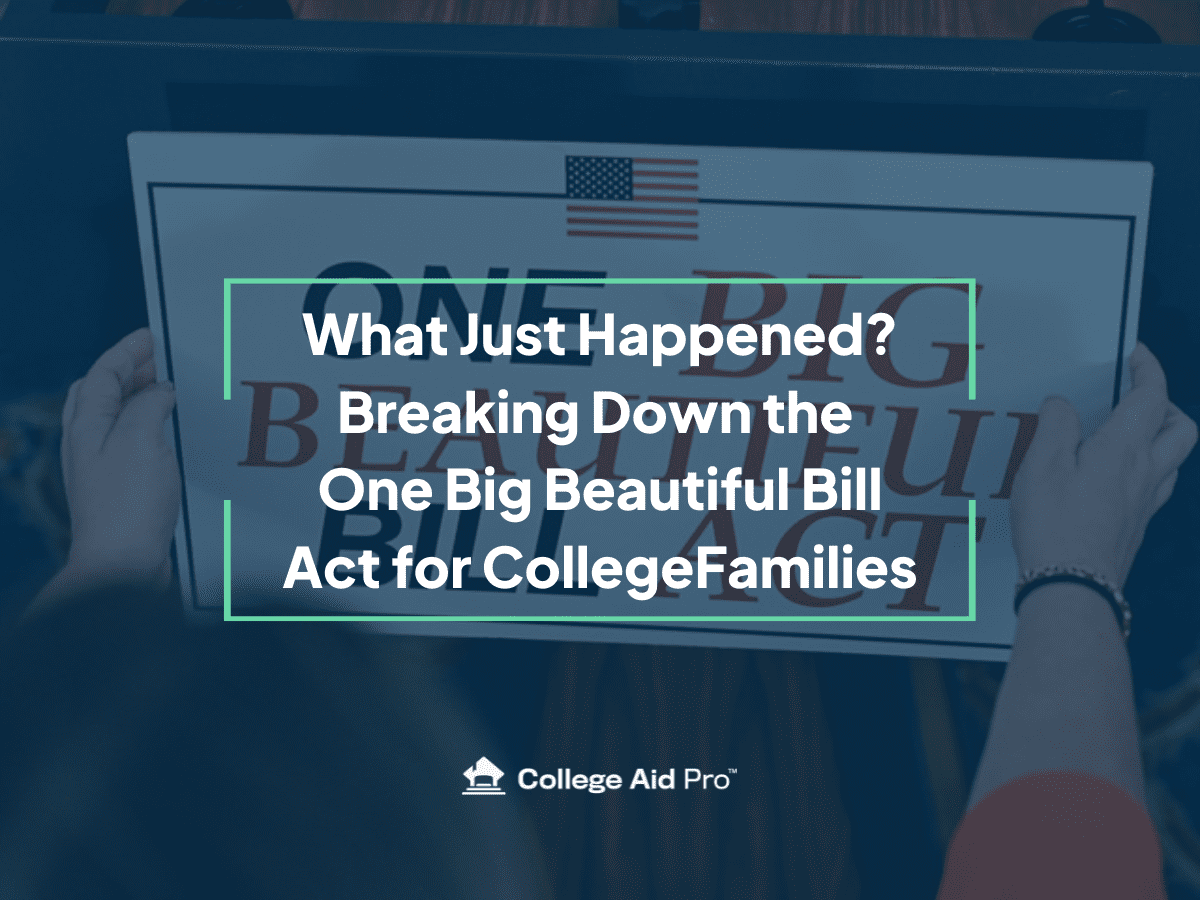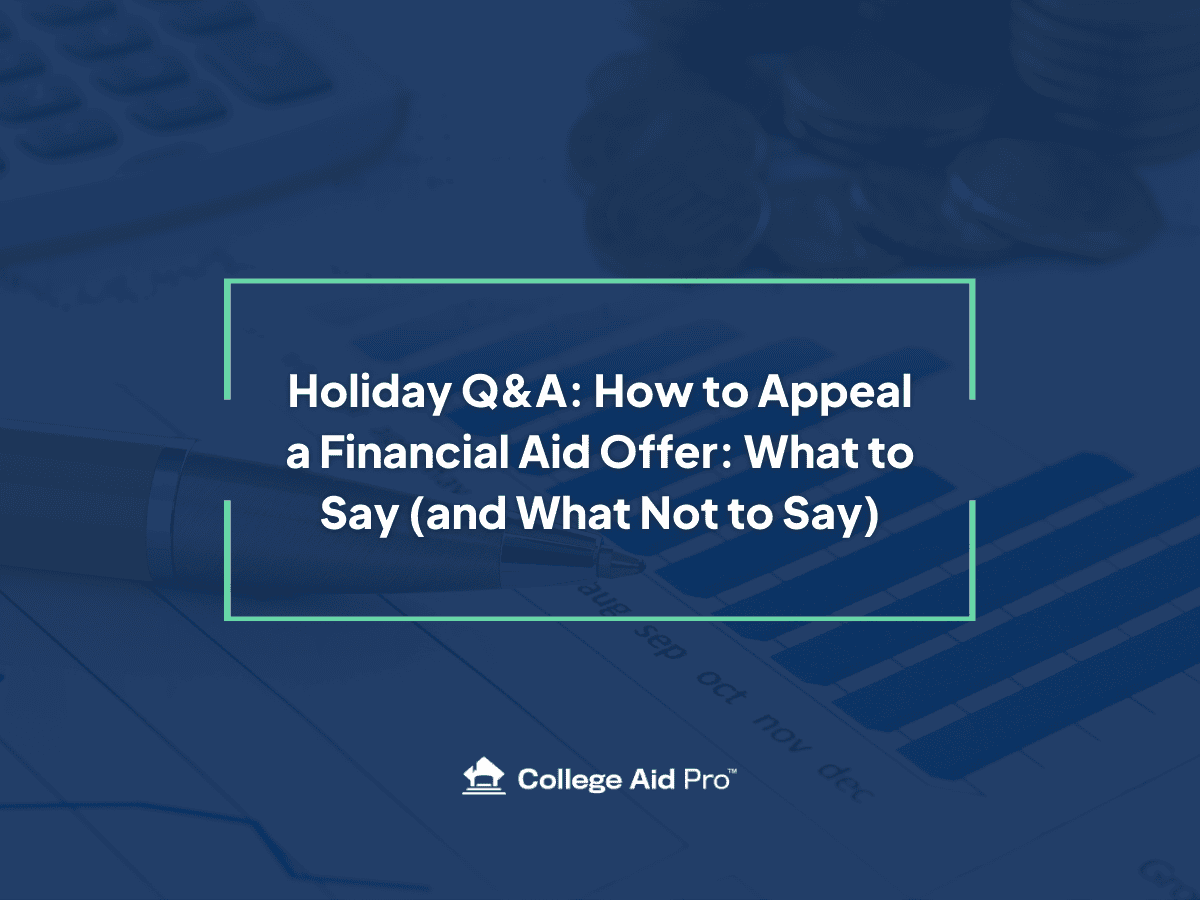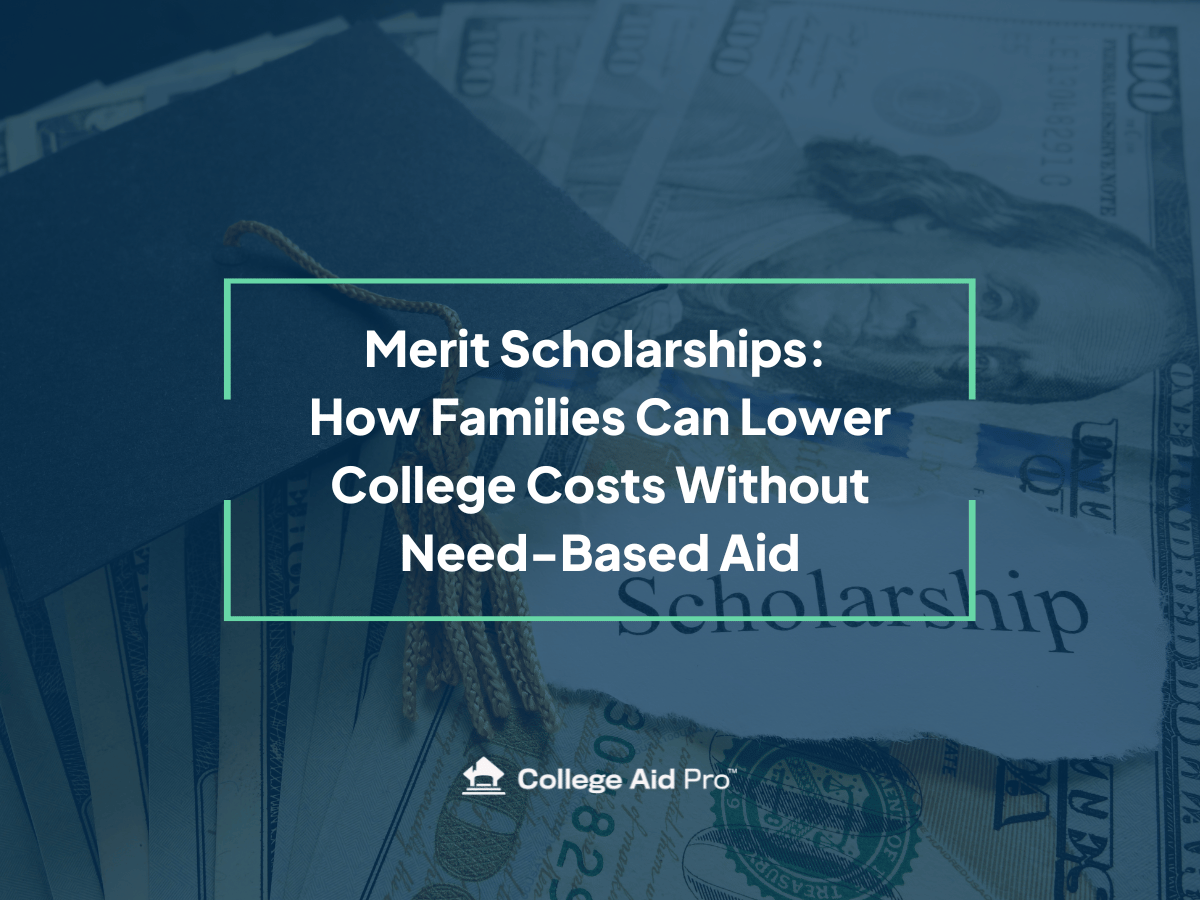What You Need to Know About the One Big Beautiful Bill Act for College

Okay friends, deep breath. We’ve got a new piece of legislation on the books called the “One Big Beautiful Bill Act (H.R. 1),” and yep, that’s really what it’s called. The name might make you chuckle (or roll your eyes), but there’s a lot packed into this bill that impacts how we save, plan, and pay for college moving forward. Whether you’ve got a kid in college now, heading there this fall, or just starting the search process, this is for you.
Let’s walk through the big stuff together. We’ll keep it real, skip the jargon, and focus on what it means for your family.
When Does This All Start?
Everything in this bill takes effect July 1, 2026 so, not tomorrow. That gives us some time to breathe and plan. And good news: if your kid is starting college before the 2026–27 school year, some current rules might stick with them all the way through graduation (we call that being “grandfathered in”). Check out our next article here about the BBB impacts to families with kids currently in college, and our 3rd article for families with rising college freshman here.
What’s Not Changing (Phew!)
- The Pell Grant stays at $7,395 a year. We were worried this might get slashed, but it didn’t.
- Full-time status remains 12 credit hours per semester. There was talk about bumping that up to 15, but thankfully, that didn’t happen.
- Subsidized and unsubsidized federal student loans are still around.
- Subsidized loans don’t accrue interest while your student is in school (big win for families with financial need).
- Unsubsidized loans do accrue interest right away, but they’re still a more favorable option than many private loans.
What IS Changing (Grab Your Coffee…)
- Pell G
 rants can only be used for direct college costs starting in 2026. Think tuition, fees, and maybe on-campus room and board. Living off campus? You may need to juggle a bit more creatively.
rants can only be used for direct college costs starting in 2026. Think tuition, fees, and maybe on-campus room and board. Living off campus? You may need to juggle a bit more creatively. - There’s a new Workforce Pell Grant for credential/career programs. It’s designed for students not pursuing the traditional four-year path, but some exclusions apply, like remedial and non-credit courses. (We’ll update you as the Department of Ed gives more specifics.)
- Parent PLUS Loans are getting capped at $20,000/year and $65,000 total per student. Up to now, families could borrow whatever was needed to cover the full cost of attendance. This is a huge shift and it’ll require some new strategies.
- Family assets like small businesses and farms won’t count against you on the FAFSA anymore. This is a big win for a lot of families.
Repaying Loans: What’s Ahead

- If you have taken out loans before July 2026, you can stay on your current plan (SAVE, PAYE, IBR), at least for now… We’ll unpack this more as we learn more.
- If you borrow through a federal loan program after that? There will only be two repayment choices: a fixed 10–25 year plan, or the new RAP (Repayment Assistance Plan), which is based on your income and family size. It’s simpler, but forgiveness takes longer and yes, there’s a marriage penalty built in.
For Grad School Folks
- Grad PLUS Loans are going away. Direct Loans remain, but they will be capped: $20,500/year or $100,000 total (unless you’re in med school or law school and then it’s $200K).
Other Bits That Matter
- 529 plans just got more flexible: up to $20,000/year can be used for K–12, and more career programs are now qualified.
- Colleges with giant endowments? They’re getting taxed more. That could limit aid budgets, meaning there could be less “discounts” in the form of scholarships or grants.
- New accountability rules could cut loan eligibility for programs that don’t produce solid graduate earnings.
Will This Change College Prices Next Year?
Short answer? No. These changes don’t start until July 2026. So if you’re wondering whether this will lower tuition next fall, it won’t. That said, the loan caps and new accountability rules could eventually put pressure on colleges to rethink pricing, especially if families can’t borrow unlimited amounts anymore. But again, that’s more of a slow burn than an immediate shift.
So, What Do We Do With All This?

Here’s the thing: These changes aren’t immediate, but they’re big enough that they might impact how you think about building your college list, especially if you’re still in the early stages of this process.
Those Parent PLUS loan caps? They mean the days of borrowing a “blank check” to pay for any college are winding down. That’s not necessarily a bad thing though. It might help rein in runaway borrowing, but it does mean families need to be more intentional about which schools make the list.
You don’t have to figure this out alone. At College Aid Pro, we’re here to walk with you, whether that’s through our free webinars, our podcast, one-on-one consultations, live workshops, or our full-service guidance. However you prefer to learn, we’ve got something that can help.
And if you haven’t already, check out our MyCAP software tool. It’s more than just a college search engine – it’s a financial planning partner. You’ll be able to:
- Compare colleges based on your numbers, not just averages
- Project aid, scholarships, and loan options
- Create a realistic plan that keeps student loan debt in check
👉 Create your free MyCAP account now
Wherever you are in this journey, keep these two things in mind:
- Know what you’ll actually pay (not just the sticker price).
- Understand how much you should borrow. Just because you can, doesn’t mean you should.
These two things can make the difference between graduating with opportunity or graduating with regret. Let’s make sure it’s the first one.



